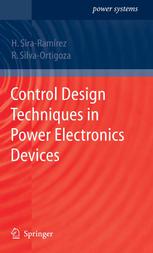

Most ebook files are in PDF format, so you can easily read them using various software such as Foxit Reader or directly on the Google Chrome browser.
Some ebook files are released by publishers in other formats such as .awz, .mobi, .epub, .fb2, etc. You may need to install specific software to read these formats on mobile/PC, such as Calibre.
Please read the tutorial at this link: https://ebookbell.com/faq
We offer FREE conversion to the popular formats you request; however, this may take some time. Therefore, right after payment, please email us, and we will try to provide the service as quickly as possible.
For some exceptional file formats or broken links (if any), please refrain from opening any disputes. Instead, email us first, and we will try to assist within a maximum of 6 hours.
EbookBell Team

4.3
68 reviewsControl Design Techniques in Power Electronics Devices deals specifically with control theories relevant to the design of control units for switched power electronics devices, for the most part represented by DC–DC converters and supplies, by rectifiers of different kinds and by inverters with varying topologies. The theoretical methods for designing controllers in linear and nonlinear systems are accompanied by multiple case studies and examples showing their application in the emerging field of power electronics. The book is introduced through the very important topic of modeling switched power electronics as controlled dynamical systems. Detailed circuit layouts, schematics and actual closed-loop control responses from a representative group of the plants under discussion and generated by applying the theory are included.
The control theories which feature in the book are: sliding mode control and feedback control by means of approximate linearization (linear state feedback, static and dynamic proportional-integral-differential (PID control), output feedback trough observer design, Lyapunov-based control and passivity-based control). Nonlinear control design methods represented include: exact feedback linearization, input-output linearization, differential flatness, generalized PID control and, again, passivity-based control.
This monograph will be of interest to researchers in power systems and their related control problems. It will also assist tutors and students in these fields with its dydactic style and its rich source of worked-out application examples from a broad spectrum of control theories.